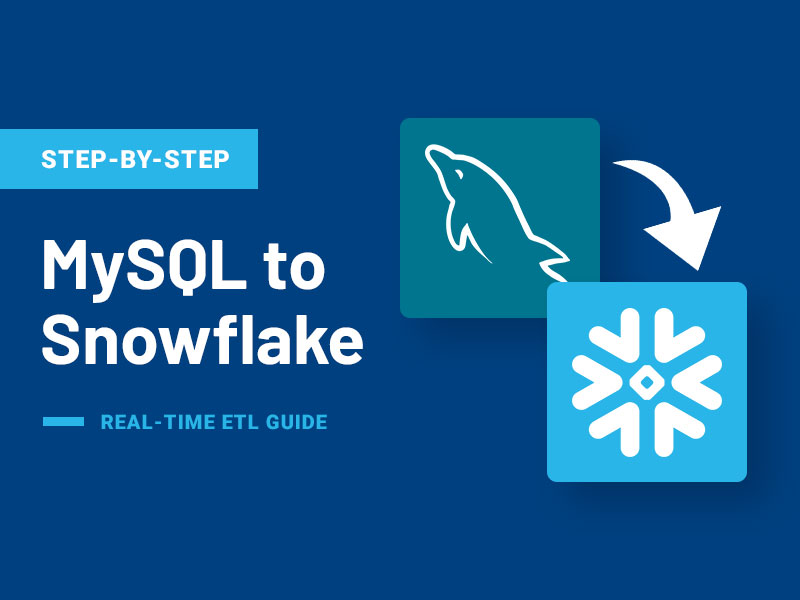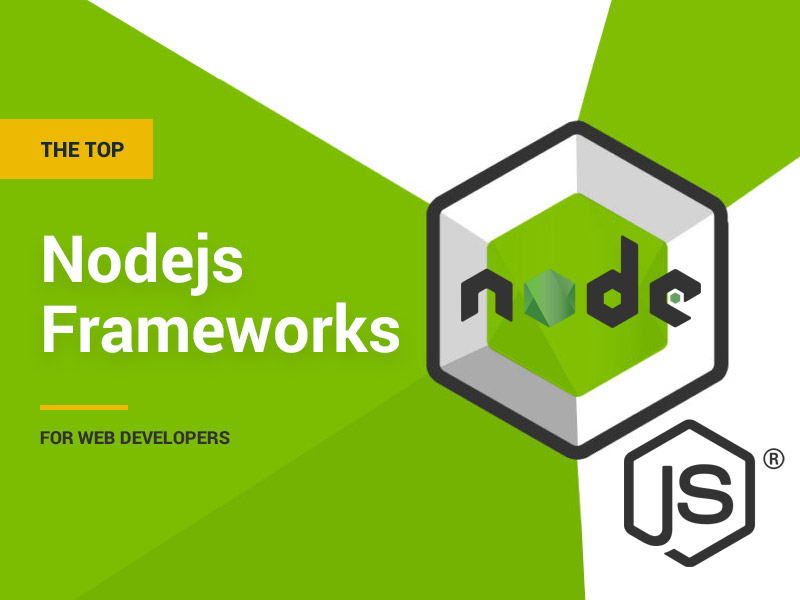In today’s data-driven world, efficient data migration is crucial for businesses looking to leverage the power of advanced analytics and real-time decision-making. This comprehensive guide aims to provide you with a step-by-step approach to migrating from MySQL to Snowflake, a cloud-based data warehousing solution, while incorporating real-time ETL (Extract, Transform, Load) processes.
1.1 Explanation of MySQL and Snowflake Databases
MySQL is an open-source relational database management system known for its reliability and scalability. It has been widely adopted by various industries for storing and managing structured data. On the other hand, Snowflake is a modern cloud-based data warehousing solution designed for handling large-scale data processing and analytics. Snowflake offers a unique architecture that separates storage and compute, allowing for scalable and efficient data operations.
1.2 Overview of Real-Time ETL Process
Real-time ETL refers to the process of extracting data from the source database (MySQL), transforming it to meet the requirements of the target database (Snowflake), and loading it in near real-time. Real-time ETL enables businesses to have up-to-date and accurate insights for timely decision-making. It involves continuous data streaming, transformation, and loading, ensuring that the most recent data is available for analysis.
1.3 Importance of Efficient Data Migration for Businesses
Efficient data migration is vital for businesses as it minimizes downtime, preserves data integrity, and ensures a smooth transition from the old database to the new one. By migrating from MySQL to Snowflake, businesses can take advantage of Snowflake’s advanced capabilities for handling large datasets, parallel processing, and scalability. This enables them to derive valuable insights from their data and gain a competitive edge in the market.
1.4 Brief Mention of the Aim of the Article
The aim of this article is to serve as a comprehensive guide for businesses planning to migrate from MySQL to Snowflake while incorporating real-time ETL processes. By following the best practices and recommendations outlined in this guide, businesses can achieve a successful and efficient migration, enabling them to harness the power of Snowflake’s data warehousing capabilities.
Understanding MySQL Databases
2.1 Definition and Features of MySQL Databases
MySQL is an open-source relational database management system (RDBMS) that is widely used for managing structured data. It offers features such as ACID compliance, support for multiple storage engines, high performance, and robust security mechanisms. MySQL is known for its ease of use, scalability, and extensive community support.
2.2 Advantages and Limitations of MySQL for Data Storage
MySQL offers several advantages as a data storage solution, including its reliability, scalability, and cost-effectiveness. It can handle large datasets and support high concurrent loads. However, MySQL has certain limitations, such as a single-threaded architecture, which can impact performance under heavy workloads. Additionally, scaling MySQL horizontally can be challenging, and it may require additional effort to optimize query performance.
2.3 Popular Use Cases and Industries Utilizing MySQL
MySQL is utilized across various industries and use cases. It is commonly used for web applications, content management systems, e-commerce platforms, and data-driven applications. MySQL’s flexibility and compatibility make it a popular choice for small to medium-sized businesses as well as large enterprises.
2.4 Key Considerations Before Migrating from MySQL to Snowflake
Before migrating from MySQL to Snowflake, it is essential to evaluate the current MySQL database structure, understand the specific requirements and goals of the migration, and assess the compatibility of existing applications and tools with Snowflake. It is also important to consider the size of the database, the complexity of the data transformations required, and the availability of resources for the migration process.
Introducing Snowflake Data Warehousing
3.1 Introduction to Snowflake as a Cloud-Based Data Warehousing Solution
Snowflake is a cloud-based data warehousing platform that offers a unique architecture designed for modern data processing and analytics. It separates storage from compute, allowing businesses to scale compute resources independently and handle large volumes of data efficiently. Snowflake provides a fully managed service, eliminating the need for infrastructure management and enabling seamless scalability.
3.2 Benefits of Snowflake for Handling Large-Scale Data
Snowflake offers numerous benefits for handling large-scale data. It provides automatic scalability, enabling businesses to dynamically allocate computing resources based on demand. Snowflake’s columnar storage and compression techniques optimize storage and improve query performance. Additionally, Snowflake’s ability to process structured and semi-structured data, along with its support for diverse data types, allows for a wide range of analytical capabilities.
3.3 Comparison of Snowflake to Traditional Data Warehousing Solutions
Snowflake differs from traditional data warehousing solutions in several ways. Traditional solutions often require upfront hardware investments and complex infrastructure management. In contrast, Snowflake is a fully managed cloud service, eliminating the need for hardware provisioning and maintenance. Snowflake’s architecture also enables seamless scalability and parallel processing, ensuring high performance even with large datasets.
3.4 Use Cases Highlighting Snowflake’s Capabilities and Advantages
Snowflake’s capabilities make it suitable for a wide range of use cases, including real-time analytics, data exploration, ad hoc querying, and machine learning. Snowflake’s data sharing features enable organizations to securely share data with external partners or within their ecosystem. Additionally, Snowflake’s built-in support for semi-structured data simplifies the handling of JSON, Avro, and other data formats commonly used in modern applications.
Real-Time ETL: Overview and Challenges
4.1 Explanation of Real-Time ETL and Its Significance
Real-time ETL is a crucial component of modern data architectures, enabling businesses to process and analyze data in near real-time. It involves extracting data from various sources, transforming it to meet the target format, and loading it into the destination system. Real-time ETL allows businesses to react quickly to changing data and make informed decisions based on the most up-to-date information.
4.2 Overview of the ETL Process and Its Stages
The ETL process consists of three main stages: extraction, transformation, and loading. In the extraction stage, data is collected from various sources, such as databases, APIs, or streaming platforms. The transformation stage involves cleaning, filtering, and enriching the data to ensure its quality and compatibility with the target system. Finally, the transformed data is loaded into the destination system, such as Snowflake, where it can be analyzed and queried.
4.3 Challenges and Complexities Involved in Real-Time ETL
Real-time ETL presents several challenges and complexities. One of the main challenges is handling continuous data streams and ensuring that the data is processed and loaded in near real-time. The complexity increases when dealing with large datasets and complex data transformations. Scalability, data consistency, and maintaining data integrity throughout the ETL process are also critical considerations.
4.4 Key Factors to Consider for Successful Real-Time ETL Implementation
To ensure a successful real-time ETL implementation, businesses should consider factors such as data latency requirements, data quality assurance, scalability, and the choice of appropriate tools and technologies. It is important to design an architecture that can handle the expected data volume, implement effective error handling and data validation mechanisms, and continuously monitor the ETL pipeline for performance and reliability.
Migrating from MySQL to Snowflake: Best Practices
5.1 Analyzing the Current MySQL Database Structure
Before migrating from MySQL to Snowflake, it is essential to perform a thorough analysis of the existing MySQL database structure. This includes understanding the schema, table relationships, and any custom features or functionalities implemented in MySQL. Analyzing the database structure helps in designing an effective migration strategy and identifying potential challenges or complexities.
5.2 Data Mapping and Transformation Techniques
Data mapping and transformation play a crucial role in ensuring a successful migration from MySQL to Snowflake. Businesses need to map the MySQL schema to the corresponding Snowflake schema, ensuring the compatibility of data types and structures. Additionally, data transformation techniques, such as cleaning, filtering, and aggregating, may be required to align the data with Snowflake’s requirements and optimize performance.
5.3 Strategies for Minimizing Downtime During Migration
Minimizing downtime is a key consideration during the migration process to ensure uninterrupted operations. Strategies such as parallel data extraction, incremental data loading, and performing the migration during off-peak hours can help reduce downtime. It is also advisable to perform thorough testing and validation of the migration process in a non-production environment before executing it in a live production environment.
5.4 Steps for Ensuring Data Integrity and Accuracy in Snowflake
Maintaining data integrity and accuracy is crucial during the migration process. Businesses should implement appropriate validation and error handling mechanisms to ensure that data is accurately transformed and loaded into Snowflake. It is recommended to perform comprehensive data quality checks, validate the migrated data against the source database, and conduct post-migration data validation to ensure the integrity of the data in Snowflake.
Tools and Technologies for MySQL to Snowflake Migration
6.1 Overview of Popular Migration Tools and Their Features
Several migration tools are available to facilitate the migration from MySQL to Snowflake. Some popular tools include AWS Database Migration Service (DMS), Talend, and Apache NiFi. These tools offer features such as schema conversion, data mapping, and parallel data loading to simplify and expedite the migration process.
6.2 Detailed Explanation of the Migration Process Using Selected Tools
In this section, we will provide a detailed explanation of the migration process using selected tools. We will walk you through the step-by-step procedure of migrating from MySQL to Snowflake using a specific tool, highlighting its features and functionalities. This will help you understand the tool’s capabilities and make an informed decision based on your specific requirements.
6.3 Comparison of Different Tools’ Efficiency and Compatibility
Each migration tool has its own strengths and limitations. It is essential to compare the efficiency and compatibility of different tools to choose the one that best suits your migration requirements. Factors to consider include ease of use, scalability, performance, support for complex data transformations, and compatibility with your existing MySQL environment.
6.4 Recommendations Based on Specific Use Cases and Requirements
Based on your specific use case and requirements, we will provide recommendations on the most suitable migration tool or combination of tools. We will consider factors such as data volume, complexity of transformations, budget constraints, and compatibility with your existing infrastructure. Making an informed decision about the migration tool ensures a smooth and successful migration process.
Performance Optimization in Snowflake
7.1 Understanding Snowflake’s Architecture and Performance Capabilities
To optimize performance in Snowflake, it is important to understand its unique architecture. Snowflake’s architecture separates storage from compute, enabling independent scaling of both components. This allows businesses to allocate more computing resources during data-intensive operations and scale down when not in use, resulting in optimal performance and cost-efficiency.
7.2 Techniques for Optimizing Data Loading and Querying in Snowflake
Optimizing data loading and querying is crucial for achieving high performance in Snowflake. Techniques such as parallel loading, compression, and clustering keys can significantly improve data loading speed and query performance. Businesses should also consider partitioning data based on usage patterns and implementing appropriate data retention policies to optimize storage and query execution.
7.3 Implementing Effective Indexing and Clustering Strategies
Snowflake supports automatic indexing, eliminating the need for manual index management. However, businesses can optimize query performance by understanding Snowflake’s indexing capabilities and implementing clustering keys. Clustering keys help physically order data within tables, reducing I/O operations and improving query performance, especially for range-based queries.
7.4 Monitoring and Troubleshooting Performance Issues in Snowflake
Monitoring performance in Snowflake is essential to identify and resolve any bottlenecks or issues. Snowflake provides built-in monitoring and diagnostic features, including query history, execution statistics, and warehouse utilization metrics. By regularly monitoring these metrics, businesses can identify performance issues, optimize resource allocation, and troubleshoot any query-related problems.
Security and Compliance Considerations
8.1 Overview of Snowflake’s Security Features and Capabilities
Snowflake prioritizes data security and provides robust security features and capabilities. These include data encryption at rest and in transit, multi-factor authentication, granular access control, and audit logging. Snowflake also supports integration with identity management systems and offers compliance with various industry standards and regulations.
8.2 Best Practices for Securing Data During Migration and in Snowflake
When migrating from MySQL to Snowflake, it is crucial to ensure the security of data throughout the process. Best practices include encrypting data during transit and at rest, securely managing access credentials, and following encryption key management protocols. It is also important to perform vulnerability assessments and regular security audits to identify and address any security gaps.
8.3 Compliance Regulations and Frameworks Applicable to Snowflake
Snowflake adheres to several compliance regulations and frameworks, such as GDPR, HIPAA, and SOC 2. It provides features and functionalities that assist businesses in meeting their compliance requirements. It is essential to understand the specific compliance regulations applicable to your industry and ensure that Snowflake’s security features align with those regulations.
8.4 Steps to Ensure Data Privacy and Protect Sensitive Information
Protecting data privacy and sensitive information is paramount during the migration process and while using Snowflake. Steps to ensure data privacy include data anonymization or pseudonymization, implementing data access controls, and conducting regular security training for personnel. By implementing these measures, businesses can maintain data privacy and protect sensitive information within Snowflake.
Case Studies: Successful MySQL to Snowflake Migrations
9.1 Real-World Examples of Companies That Migrated from MySQL to Snowflake
In this section, we present real-world case studies of companies that successfully migrated from MySQL to Snowflake. These case studies highlight the challenges faced during migration, the strategies implemented, and the benefits observed after migrating to Snowflake. By examining these examples, businesses can gain insights into real-life migration scenarios and learn from successful implementations.
9.2 Challenges Faced and Solutions Implemented During the Migration
We delve into the challenges faced by the companies during their MySQL to Snowflake migration journey and the solutions they implemented to overcome those challenges. These challenges may include data compatibility issues, complex transformations, downtime constraints, and performance optimization. Understanding how these challenges were addressed provides valuable lessons for businesses planning their own migration.
9.3 Benefits and Improvements Observed After Migrating to Snowflake
The case studies highlight the benefits and improvements observed by the companies after migrating to Snowflake. These benefits may include enhanced query performance, improved scalability, reduced infrastructure costs, and better data analytics capabilities. Understanding the tangible advantages experienced by other organizations reinforces the value proposition of migrating from MySQL to Snowflake.
Also read: AWS vs DigitalOcean – How to Select One?
Conclusion
In conclusion, migrating from MySQL to Snowflake while incorporating real-time ETL processes is a strategic decision for businesses aiming to leverage the power of advanced analytics and data-driven decision-making. This comprehensive guide has provided insights into understanding MySQL databases, introducing Snowflake as a data warehousing solution, and explaining the significance of real-time ETL. It has outlined best practices for migration, discussed tools and technologies, and covered performance optimization, security, and compliance considerations.
By following the recommended approaches and leveraging the capabilities of Snowflake, businesses can achieve a seamless and successful migration. The case studies shared in this article demonstrate the practical applications and benefits of migrating to Snowflake from MySQL. As technology evolves and data becomes increasingly valuable, choosing the right migration approach is essential for businesses to unlock the full potential of their data and gain a competitive edge in today’s data-driven world.







